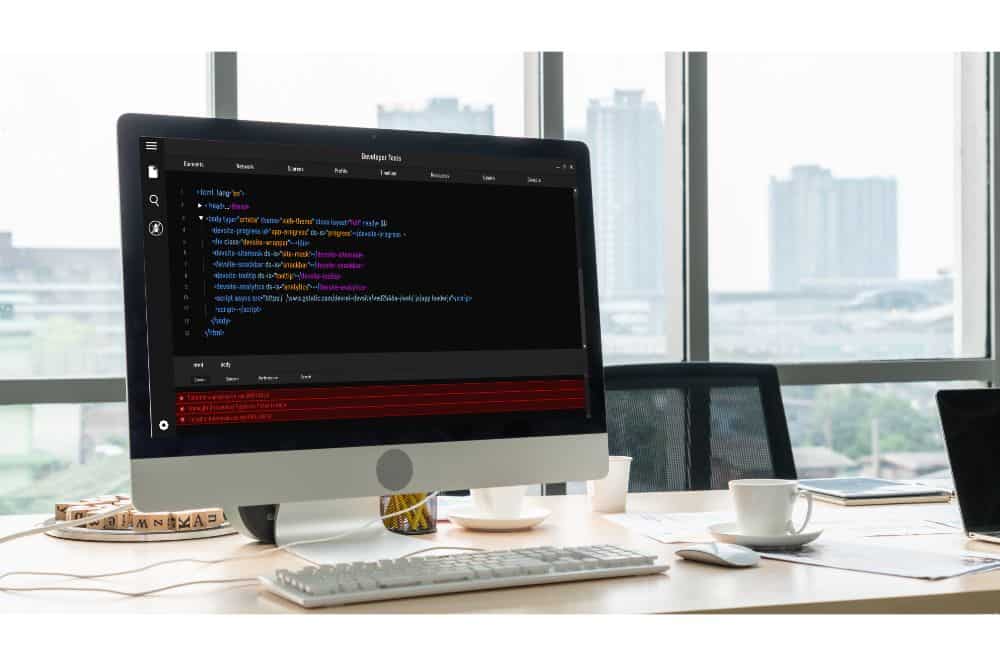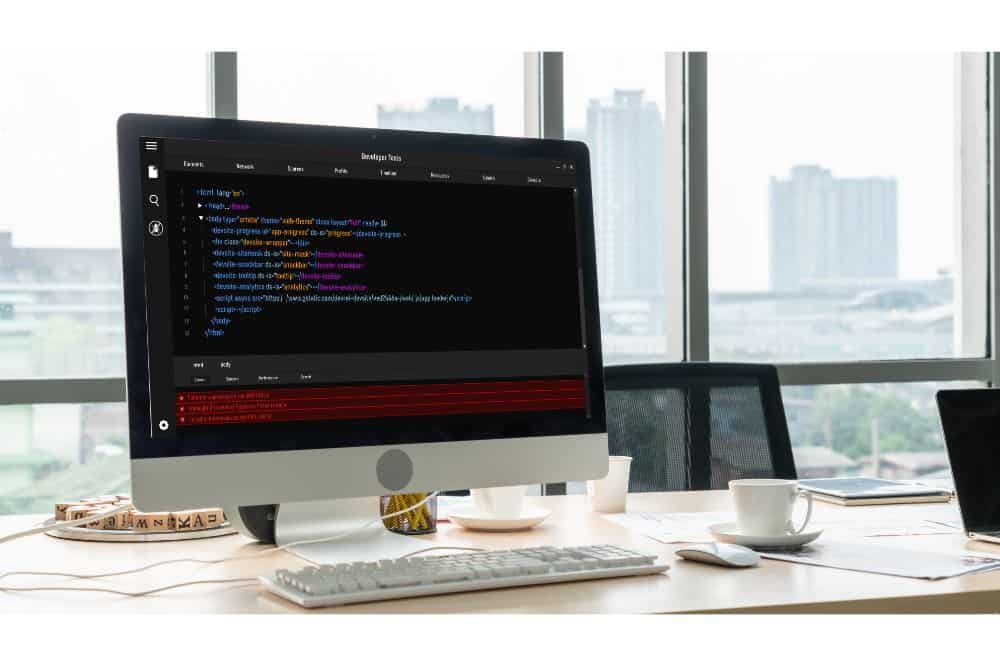The Java programming language, created in 1991, has been around for over three decades. Nearly every smart device worldwide runs on Java, which shows how influential the language is. So it might be safe to answer the question “What is Java?” by saying Java is the backbone of modern technology.
Even so, there’s more to Java than just being ubiquitous. There are many interesting facts about it and ways to use it. So if you’re interested in learning how Java helps create your favorite app and websites, read on to learn more about it.
History of Java
James Gosling of Sun Microsystems started working on Java in 1991. Originally, Java was called OAK, which Gosling named after a tree outside his office.
OAK was developed for portable electronics and set-top boxes, but it wasn’t successful. It failed terribly. However, Sun Microsystems (later acquired by Oracle, the tech giant behind Linux and MySQL) didn’t give up.
After modifying OAK to work with the internet, they changed the name to Java (the name OAK was trademarked by Oak Technologies). The new name came to Gosling while he was drinking coffee. Soon Java was listed as one of Time Magazine’s Ten Best products of 1995.
Java was first officially released in 1995 and updated over time in Gosling’s quest to make it a convenient programming language. He wanted to be able to write code once and run it everywhere. Thankfully, he met this goal, and Java is now widespread.
What Is Java? – Its Main Java Features
Because Java is designed to run everywhere, you can write code on one platform and run it on another. It’s how developers write apps for smartphones on their computers.
While some code adaptation is required, it takes much less time than developing a new app from scratch. In addition, the code is relatively similar across platforms, allowing for a smooth migration.
This trait is called platform independence. While the code you write isn’t guaranteed to run on a different platform, failure to run doesn’t happen too often. A trained programmer can ensure the Java-based object runs everywhere.
After Gosling adapted Java for the internet, it became highly distributable. Besides being multithreaded, Java has automatic memory management. Because of this, there’s a lower risk of using too much RAM on the intended device.
Thanks to its open-source and free price point, anyone with the training and experience can start programming in Java once they download the software development kit. Being so accessible is how Java manages to stay relevant after all these decades.
Java Components
Besides the programming language’s source code, Java has other parts. The source code must be translated into machine code, which is what computer hardware understands. The CPU will handle the translation, making learning source code the only thing necessary.
Java is then divided into three main components that handle this process.
Java Development Kit
The Java Development Kit (JDK) is what all Java programmers need. The programming language is open-source, and you can download the JDK from the Oracle website. In addition, the JDK is available for all major operating systems, enabling developers to write Java programs on their preferred machines.
- Windows
- macOS
- Solaris
- Linux distributions
The JDK has a compiler that converts all written Java source code into byte code, which is the code that will be converted into machine language. Fortunately, users aren’t required to learn byte code. The Java application then opens a Java Runtime Environment (JRE), software that runs other programs.
As the JRE is launched, it loads the right class and executes the main method.
Java Virtual Machine
The Java Virtual Machine (JVM) is part of the JRE. It’s the part that converts the Java byte code into machine code. Java’s compiler does so for a virtual machine, unlike other programming languages with a compiler for particular systems.
The platform-independent nature of Java comes from the JVM since it lets users run source code on any platform. You have many basic needs covered with many tools, libraries, and frameworks. The Just-in-Time compiler that JVM is part of runs faster than many other apps since it converts Java into low-level machine code.
After you test run a Java program on the JVM, it should work on other platforms too. That’s where the phrase “write once, run everywhere” comes from.
Java Runtime Environment
JRE is software that executes the Java programs you write. Loader classes, class libraries, and JVM are part of its feature set. People who aren’t programmers but want to run Java programs don’t need JDK, but JRE is necessary.
While Java applets aren’t as popular as they once were, some people still wish to run them. They can easily download JRE and install it. After doing that, applets become executable.
Some of the classes JRE can run are:
- math
- swing
- util
- lang
- awt
- runtime
Java’s Common Uses
So, what is Java and its common uses? With JRE installed on a device, Java can run practically anywhere due to its platform independence. Here are some objects you can find it on.
Android Devices
The Android operating system for smartphones and tablets is based on Java, and many non-Apple devices have Android installed. In fact, there are currently billions of mobile phones running Java, even those that are classified as “dumb phones.” So you might be reading this paragraph on a device primarily running Java.
Many Android apps use Java API or were written in Java, making it difficult to find one that doesn’t use the language. Therefore, Java is often regarded as the official language of smartphone apps.
Desktop Apps
Since Java is easy to run and write code with, many programmers create desktop apps using the language. In particular, their graphic user interface (GUI) elements are designed this way. Examples include Swing and JavaFX.

Websites
Java was adapted for internet usage long ago and is still found on many web-based apps. Many industries that require interactive websites will use Java to code the buttons, graphics, and other elements.
Billing Applications
Billing applications are primarily written in Java, particularly in the financial and retail sectors. Some server-side apps are also developed using this programming language. Java’s accessibility makes it a popular choice for banks and stores.
Other Electronics
Smart fridges, digital kiosks, and other devices use Java apps, which means many people use them without a second thought. An example is the Samsung Side by Side with Family Hub refrigerator that runs on Android.
Smart TVs also run Java even if they don’t have Android. It’s estimated that 125 million TVs use the language to function.
Scientific Experiments and Research
Machine learning applications are based on Java, with some using Java-ML, a framework developed for this very purpose. Machine learning is a booming industry, and these programmers use many Java-based products to further their research.
Java Platforms
Currently, there are four Java platforms. Each is aimed at a particular set of programmers and developers so they can specialize in performing specific tasks.
Standard Edition
This edition is the core version most users are familiar with since it comes with all of Java’s essential functions. It’s often used in the following ways.
- Security
- Networking
- GUI development
- XML parsing
- Accessing databases
Enterprise Edition
The Enterprise Edition (EE) is often the choice of developers working on large-scale and highly-scalable apps. These apps are much more demanding to write code for and implement, making a powerful tool like Java EE necessary.
Micro Edition
Where Java EE is for more robust tasks, Java ME is designed for the opposite. It has a small-footprint virtual machine and API, which is suitable for mobile phones, smart fridges, and other devices. Moreover, the specialization it offers in developing these electronics makes it more effective than Java SE on this front.
Java FX
For internet-based applications that deal with graphics and media, developers use Java FX instead. It uses the PC’s hardware to run tasks and develop these objects. For example, you may use Java FX to make a modern-looking website user interface.
Since Java FX is free to download, you may encounter it on many websites.
Java’s Effects
Since 1995, Java has been extensively tested, upgraded, and proven effective at what designers put it through. The applications Java can make are limitless, and its platform independence has revolutionized programming. So, what is Java? Well, it’s an application that makes creating cross-platform apps much easier.
Today, there are millions of developers who are trained in Java. It has shaped technological development since its creation. This influence isn’t likely to go away soon.
Many apps today comprise thousands and even millions of Java source code.
The language’s stability and flexibility are difficult to beat, and few other programming languages have a history like Java’s.
Present Everywhere
What is Java? You can call it one of the world’s most successful and widespread programming languages. It makes many, if not all, of your favorite apps possible, and its future implications are almost limitless.

